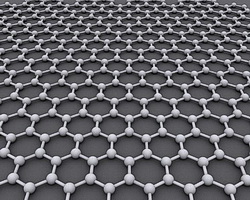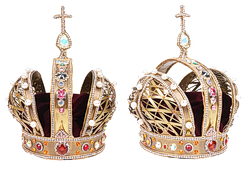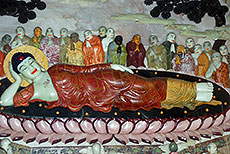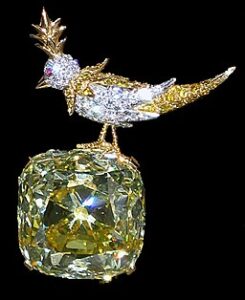
Diamond prospecting is no easy feat. Miners only succeed in accessing the deposit of this dazzling gemstone after a lot of failed endeavors. After that, finding these large minerals is an achievement in itself.
And finding a diamond that is large with fancy colors, happens very rarely. But this rare event has recently taken place in Canada where a diamond mining company has unearthed a whopping 552-carat yellow diamond.
It is the largest diamond that has ever been found in the North American region and beats the earlier record (187.7-carat) by a mile. Dominion Diamond is the company that mined this gem (before cutting and polishing) from its mine in Calgary, Canada. The discovered specimen which has yet to be named, holds a diameter of 1.5 inches and a height of a bit over two inches.
From a geological standpoint, it is being said that diamonds of that size, color, and texture are not usually found in this region. As per the press release issued by Dominion Diamond, the mining of this rare rock in its original form was made possible by quite an arduous process. The company has termed the excavation of diamonds without any fragmentation a remarkable feat. One can easily make out the abrasion marks on the surface of the excavated specimen in the picture released by Dominion Diamonds. It shows the amount of effort that went into mining it in its natural form.r
Bright Yellow Diamonds are Prized Gemstones
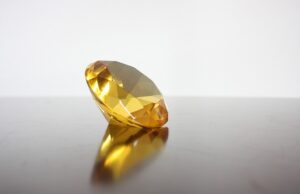
Different colored diamonds have varied demands in the gemstone world. If we particularly talk about yellow diamonds, then one can see an interesting trend among gem lovers. For instance, diamonds with a pale yellow hue are cheaper than the colorless ones. However, the tables are turned as pale yellow transcends into more brighter and intense shades. Diamonds with dark yellow shades are pricier than colorless specimens.
This color phenomenon is primarily caused by chemical impurities that exist at the molecular level in any specimen. For instance, a blue hue in any diamond specimen is developed because of the presence of boron atoms in its structure. Similarly, the existence of nitrogen molecules between the crystal lattice is responsible for yellow color.
The Rarity of Yellow Diamonds
Colored diamonds, in general, are extremely rare. According to certain estimates, every 10,000 carats of diamonds have only one carat of the naturally colored specimen. However, within the domain of color diamonds, yellow ones are the most common. More than half of the colored diamonds exist in different bands of yellow hue. The prevalence of yellow diamonds among color diamonds doesn’t change the fact that it is still a rare gemstone. To put things in perspective, only one out of 16,000 carats of mined diamonds are yellow.
Different Shades of Yellow and Other Color Combinations
As mentioned earlier, not every natural yellow diamond is of the same intensity and color saturation. Moreover, many times a secondary color undertone is also present in yellow diamond specimens. All these factors play a great part in setting the demand and price of the stone. Even though different people scale the intensity of color through different parameters, the standard is set by the Gemological Institute of America differentiates the color by these intensities:
-
- Fancy Light Yellow
- Fancy Yellow
- Intense yellow
- Deep yellow
- Vivid yellow
The price of the specimen goes up as we move from fancy light yellow to vivid yellow. The deep and vivid yellow diamond specimens don’t just have a magnificent appearance, but they are extremely rare too. For that matter, a huge price difference exists between the different yellow diamond specimens. For instance, a vivid yellow diamond will be four times more expensive than a fancy light specimen with the same carats and cuts.
Yellow Diamonds and Secondary Colors
Yellow diamonds are often found with secondary undertones. Some of the common multi-color yellow diamonds are:
-
-
- Brown yellow
- Green yellow
- Orange yellow
-
The Brown yellow diamond is a specimen with a predominant yellow hue and a secondary undertone of brown. The same goes for green-yellow and orange-yellow specimens. The price of yellow diamonds with secondary shades depends on the rarity and demand of that color. Yellow diamonds with a tinge of green are more expensive than plain yellow specimens. On the other hand, yellow diamonds with brown undertones are not that sought-after.
Famous Yellow Diamonds
Before this discovery, some other yellow diamonds have also made history. For example, one of the world’s largest yellow diamonds was discovered even before the new wave of gem prospecting and mining. It was discovered by the British mining company DeBeers in the then-newly discovered diamond mines in South Africa. The specimen was later cut into a 234-carat cushion piece and bought by the Maharaja of Patiala, India for his necklace.
The Tiffany Yellow Diamond is also one of the largest colored diamonds. It was also discovered in the early diamond mining days in South Africa. The stone was originally 287 carats but was later cut into 128-carat pieces.
The discovery of yet another rare gemstone suggests that the earth’s crust still has many spectacular specimens to astonish us with their brilliance. It also implies that ‘the largest gemstone’ can’t be a conclusive title for any mined gem.
Before we wrap up the article, let’s have a look at some of the metaphysical properties attributed to yellow diamonds.
-
-
- It is believed that wearing yellow diamonds brings joy and happiness. The yellow diamond symbolizes the motifs of love and commitment that eventually lead to happiness and contentment.
- Yellow diamonds are also known for improving inner strength. People can easily deal with difficult and unwanted situations when their inner strength is reinforced by a yellow diamond.
- Yellow diamonds are also believed to have a cleansing effect on negative thoughts. Negative sentiments such as envy, treachery, and greed can put the affected person on the path of self-destruction. Wearing a yellow diamond can help in mitigating the levels of negative emotions.
-



